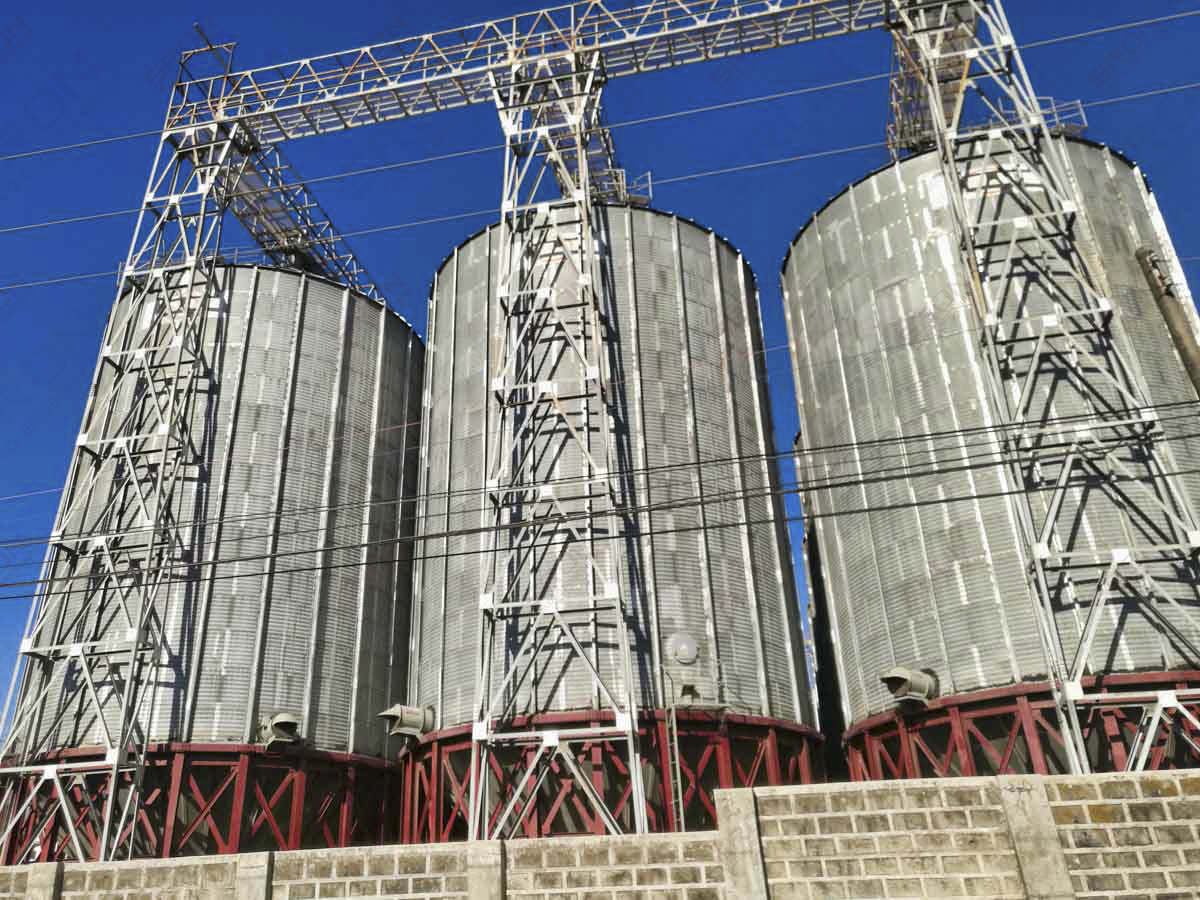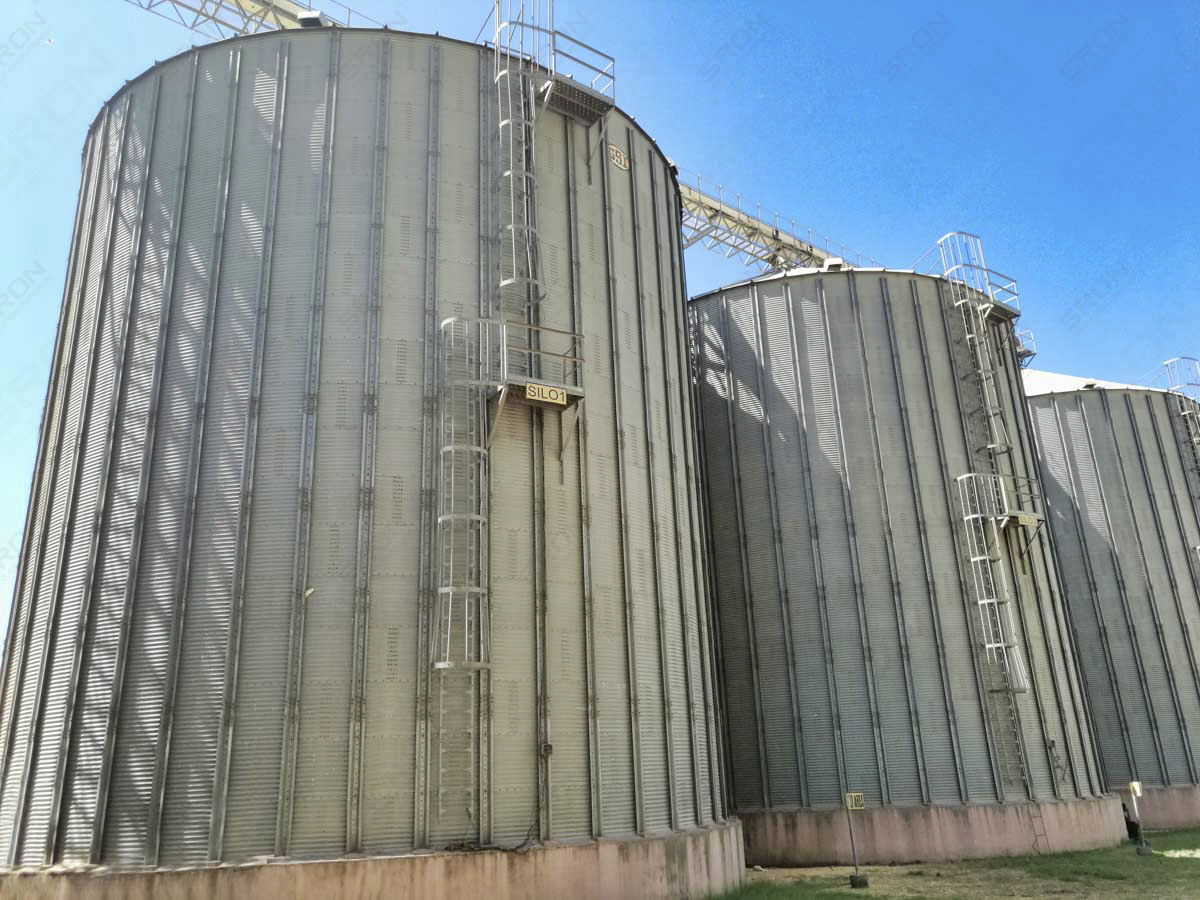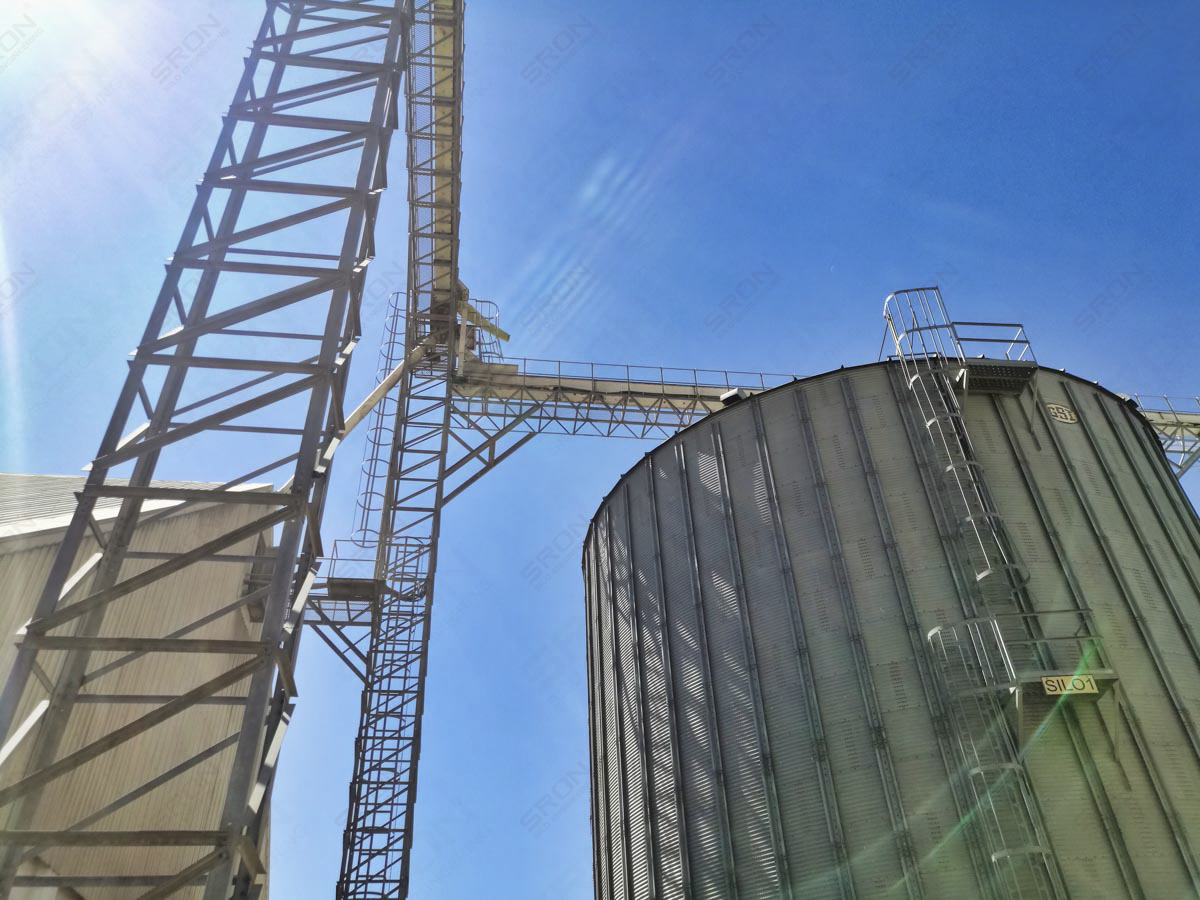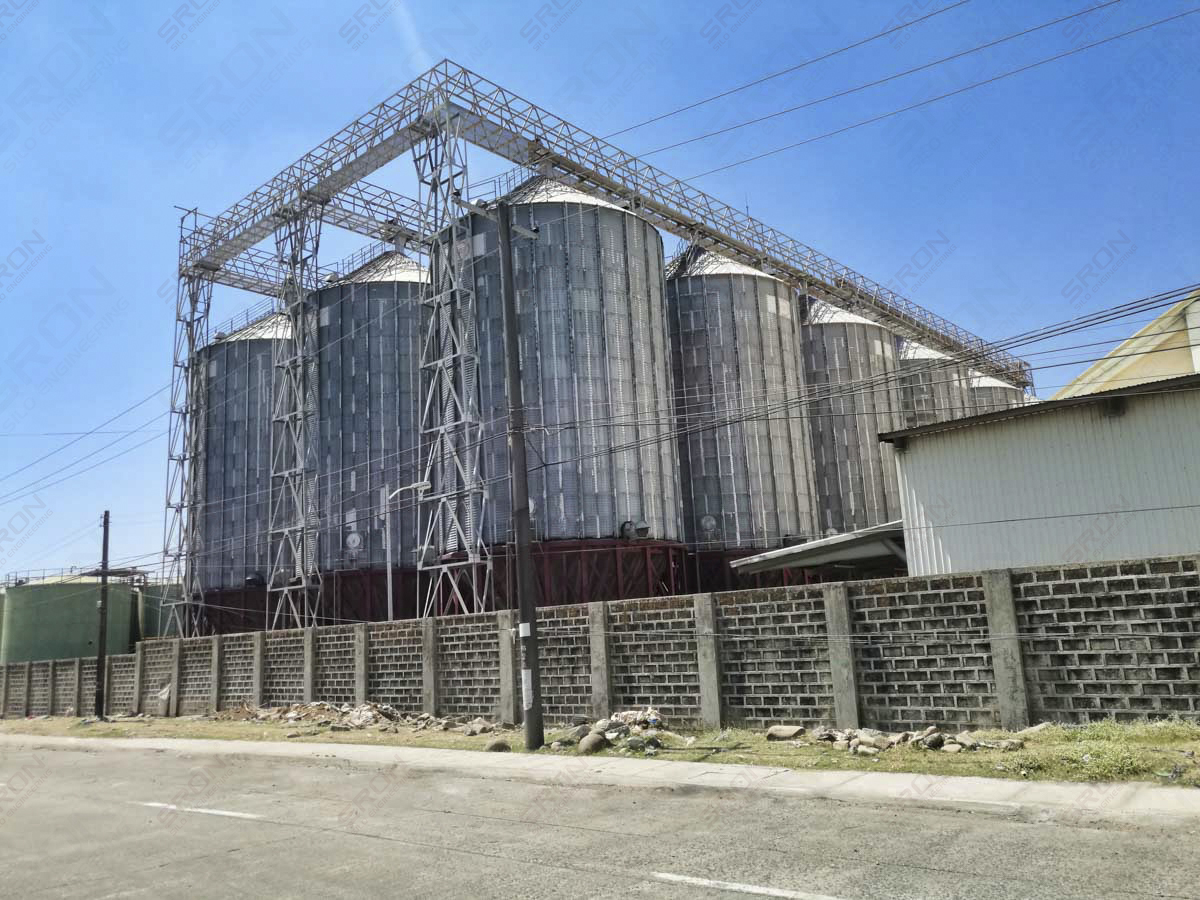Compared with traditional concrete warehouses, steel silos have lower construction costs, and their subsequent maintenance and operation costs are also more economical. Steel silos have high structural strength and do not require a lot of infrastructure, which reduces overall costs. When they are no longer in use, they can be dismantled and recycled, which is energy-saving and environmentally friendly.
How to choose the appropriate steel silo capacity
1. Capacity requirements
The capacity of the steel silo is selected according to the amount of wheat to be stored. Generally speaking, the capacity of the steel silo is measured in tons, and the capacity requirement will be determined based on the actual storage volume and future demand.
2. Warehouse structure design
Height and diameter: The design height and diameter of the steel silo need to be selected according to the land area and transportation conditions. Generally, a higher steel silo can provide more storage space, but the bearing capacity of the foundation needs to be ensured.The common shape of steel silos is round, which helps to effectively distribute the pressure in the silo and reduce uneven loads.
3. Material and anti-corrosion performance
Steel silos are usually made of galvanized steel, which can effectively prevent wheat from being affected by moisture or corrosion during storage. Choosing materials with good anti-corrosion properties can extend the service life of steel silos. When choosing materials, the climatic conditions of the area where the silo is located should also be considered. Especially in areas with heavy humidity and salt spray, materials with stronger corrosion resistance may need to be selected.
4. Temperature and humidity control
Wheat storage needs to maintain appropriate temperature and humidity to avoid mildew and insect pests. The steel silo can be equipped with a temperature and humidity monitoring system to ensure a stable storage environment. For large-scale storage, automated temperature control and ventilation systems can also help regulate air circulation and reduce moisture accumulation.
5. Ventilation and exhaust design
During wheat storage, a good ventilation system is required to prevent the wheat accumulated in the warehouse from heating up, getting moldy or fermenting. Steel silos are usually designed with ventilation ducts or fans to ensure air flow. The location and number of vents need to be considered to achieve the best ventilation effect.
6. Discharging and conveying system
Choose a suitable discharging system. The steel silo should be equipped with a discharging device that is easy to operate and maintain, such as a screw conveyor, a scraper conveyor, a bucket elevator, etc. This ensures that the stored wheat can be smoothly released and transported when needed.
7. Compressive strength and durability
When wheat is stacked in the warehouse, a certain amount of pressure will be generated, so the pressure resistance of the steel silo needs to meet the standards to avoid deformation or damage due to excessive storage weight.
In the process of agricultural production and grain management, the capacity selection of steel silos is crucial. Reasonable capacity can not only improve storage efficiency, but also reduce costs and ensure the quality and quantity of grain. Through comprehensive consideration of factors such as annual output, storage cycle, land area, and flexible use of modular design and expansion solutions, agricultural producers and grain companies can make the best choice. The choice of steel silos must not only meet current needs, but also take into account future development trends in order to achieve long-term economic benefits and sustainable development.




